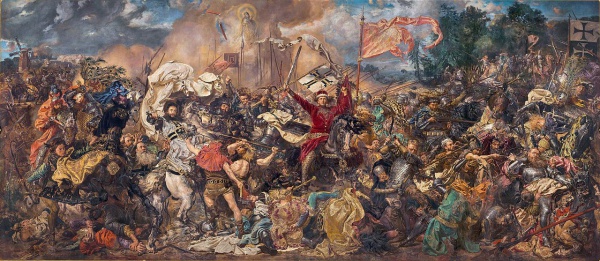Facts About Battle of Grunwald
The Battle of Grunwald is a renowned painting by Jan Matejko that captures the epic victory of the allied forces of Poland and Lithuania over the Teutonic Order in 1410. Completed in 1878, this grand canvas heroically depicts a pivotal moment in Polish and Lithuanian history and is proudly displayed at the National Museum in Warsaw. The painting centers on the dramatic death of the Grand Master of the Teutonic Order, Ulrich von Jungingen, and features notable figures like the Lithuanian Grand Duke Vytautas the Great and the Polish King Władysław Jagiełło.
Matejko conducted extensive research to create this masterpiece, ensuring that various historical figures and events were accurately represented. During the Nazi occupation of Poland, the painting was hidden to protect it and was later restored after World War II. It underwent further restoration in the 2000s and was once again showcased at the National Museum. This artwork is not just a stunning depiction of a battle scene but also a powerful symbol of Polish resilience and triumph, especially during challenging times.
While Matejko's intricate composition has been praised for its detail and symbolism, it has also faced criticism for its historical inaccuracies. The painting's complexity has sparked numerous scholarly debates and interpretations. Nonetheless, it remains a poignant reminder of the cooperation between Poland and Lithuania and their bravery against the Teutonic Knights.
The Battle of Grunwald is one of Matejko's most iconic works, deeply embedded in Polish cultural consciousness. It has inspired countless artists and stands as a lasting emblem of Polish history and national pride.

 Czech Republic
Czech Republic